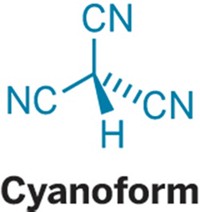Advertisement
Grab your lab coat. Let's get started
Welcome!
Welcome!
Create an account below to get 6 C&EN articles per month, receive newsletters and more - all free.
It seems this is your first time logging in online. Please enter the following information to continue.
As an ACS member you automatically get access to this site. All we need is few more details to create your reading experience.
Not you? Sign in with a different account.
Not you? Sign in with a different account.
ERROR 1
ERROR 1
ERROR 2
ERROR 2
ERROR 2
ERROR 2
ERROR 2
Password and Confirm password must match.
If you have an ACS member number, please enter it here so we can link this account to your membership. (optional)
ERROR 2
ACS values your privacy. By submitting your information, you are gaining access to C&EN and subscribing to our weekly newsletter. We use the information you provide to make your reading experience better, and we will never sell your data to third party members.
Synthesis
Copper intermediate sighted
June 25, 2007
| A version of this story appeared in
Volume 85, Issue 26
After eluding investigators for more than three decades, the predicted copper(III) intermediate at the heart of many synthetically useful organocopper reactions has finally been stabilized and observed, thanks to a rapid-injection NMR spectroscopic technique (J. Am. Chem. Soc. 2007, 129, 7208). Steven H. Bertz, Michael Murphy, Craig A. Ogle, and coworkers at the University of North Carolina, Charlotte, used an NMR tube chilled to -100 oC as their reaction and observation vessel. They first prepared a solution containing the methylating reagent (CH3)2CuLi•LiCl and trimethylsilyl cyanide. When 2-cyclohexenone was injected into this mixture, it was converted almost exclusively into the copper(III) intermediate shown. This species, the chemists find, persists indefinitely at -100 oC, allowing them to characterize it extensively using NMR techniques. Upon warming to -80 oC, the intermediate breaks down to form the expected product, which has a methyl group attached to the ring carbon that formerly carried the copper. A theoretical study by James P. Snyder and Haipeng Hu at Emory University confirms these results (J. Am. Chem. Soc. 2007, 129, 7210).





Join the conversation
Contact the reporter
Submit a Letter to the Editor for publication
Engage with us on Twitter